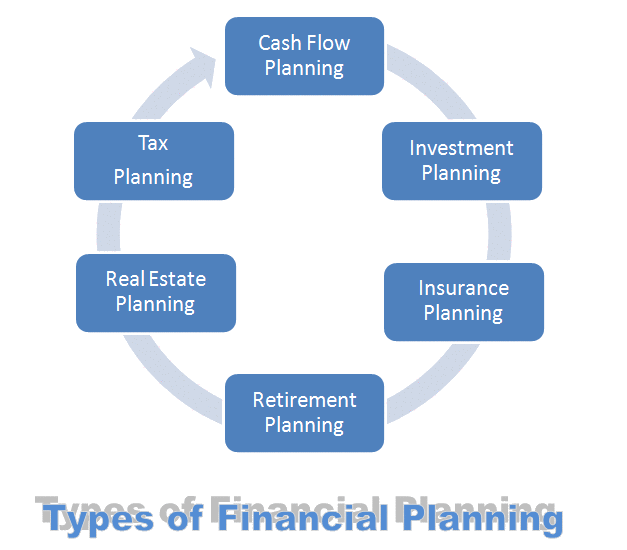Large enterprises, governments, and international organizations have long used debt capital markets to raise funding from investment funds, pension funds, insurance companies, and other institutional investors. Let’s rapidly review the definitions of debt securities, examples, why to invest, features and types of debt securities.
Debt securities are deemed negotiable since ownership rights can be transferred with relative ease. The most popular sort of security in this category is a bond. In exchange for a specified rate of interest on the principal, the borrower and lender agree that the borrower will repay the loan’s principal at maturity.
Debt Securities Definition
For instance, a debt security consists of a notional amount (the amount borrowed), an interest rate, a maturity date, and a renewal date.
Debt securities include government bonds, corporate bonds, certificates of deposit, municipal bonds, and preferred stocks. Municipal bonds and preferred stocks are examples. Examples of debt securities include collateralize debt obligations, collateralize mortgage obligations, zero-coupon securities, and mortgage-backed securities issued by the Government National Mortgage Association (GNMA). Other debt products include mortgage-backed securities and GNMA-issued mortgage-backed securities.
Examples of a Debt Securities
Emma recently purchased a new home with the assistance of a bank mortgage. Emma views the mortgage as a loan that must be repaid with principal and interest on a regular basis. In the viewpoint of Emma’s bank, her mortgage loan is an asset; specifically, it is a debt security that entitles the bank to interest and principal payments.
Emma and her bank have a mortgage agreement that specifies the principle amount, interest rate, payment schedule, and date of payback. In this case, the exact collateral for the loan is the home she purchased with the borrowed funds, as stipulated under the loan agreement.
As the owner of this debt security, Emma’s bank has the option of maintaining it or selling it to a company that will package it as a CMO on the secondary market. Emma’s bank will retain the asset if it decides to do so (CMO).
How Does Debt Securities Work
A debt security is produced when one party provides a loan to another. For instance, corporate bonds are debt securities sold to investors by corporations. When a bond matures, investors anticipate receiving a predetermined amount of interest payments in addition to their initial investment.
In contrast, government bonds are financial securities that governments sell to investors. Bond buyers agree to loan the government money in exchange for interest (or coupon payments) and a return on their initial investment.
Debentures are sometimes known as fixed-income securities. This is owing to the fact that interest payments generated by debt instruments are a reliable source of income. In contrast to equity investments, deferred payment debt instruments guarantee both the initial principal repayment and a fixed stream of interest payments over the investment’s duration.
Obviously, this contractual guarantee does not imply that debt instruments are risk-free, given that the issuer could declare bankruptcy or fail to fulfill its commitments. However, this does not mean they are risk-free.
Different Types of Debt Securities
It is crucial to comprehend the portfolio while investing in debt funds. Therefore, it is necessary to comprehend the various forms of debt instruments in this portfolio. Permit us to understand.
Corporate Bonds
Debt securities include both public and private corporate bonds. The corporation commits to return the principal on the stated maturity date in exchange for the money. Until then, the company would typically pay you interest at a specified rate, typically every six months.
Government Obligations
The Indian government is the greatest debtor in the country. It primarily obtains funds through the issuance of securities with varied maturities. This is done in order to fund government expenditures like as infrastructure, social programmes, health, defense, and education, among others. As a result of the government’s backing, government securities earn the highest possible rating. The grade is an F. (sovereign). They contribute to the government’s deficit financing.
Treasury bills, bonds, and other dated securities are issue by the federal government, whereas state governments exclusively issue State Development Loan bonds (SDLs). Investing in government securities (G-secs) eliminates the risk of insolvency or default.
Commercial Paper
Businesses sell commercial paper to earn revenue for a period of one month to one year. The abbreviation CP stands for commercial paper. This is a financial instrument with no repayment guarantee.
Non-convertible Debentures
NCDs are a form of financial instrument that corporations can use to acquire long-term funding. This is perform by utilizing a public concern. NCDs are a sort of fixed-term and interest-rate financial instrument.
Certificate of Deposit
CDs are contracts between a depositor and an institution authorize to issue them, such as a bank or other financial institution. Depositors store funds in a savings account for a specified time period, and banks and other financial institutions pay interest on the principal balance. The bank provides a promissory note to all depositors, whether they are individuals or businesses.
Treasury Notes
Investing in Treasury Bills, which are short-term borrowing securities issued by the Government of India with maturities ranging from one to one year, allows investors to minimise market risk while storing extra funds. The Reserve Bank of India regularly auctions them off, and they are issue at a discount to the currency’s face value.
CBLO
A CBLO is a financial product on the money market that represents a borrower-lender contract. These instruments are handle by the Clearing Corporation of India Ltd. and the Reserve Bank of India. Members of the CCIL have minimal or no access to the Indian interbank call money market.
Earn Cash
The call money market is where transactions for short-term loans occur. “call money” refers to money borrowed for a single day on this market. Financial institutions would borrow money from the money market in order to comply with the RBI’s Cash Reserve Ratio (CRR) and Statutory Liquidity Ratio (SLR) restrictions. This will allow the institutions to close any budget deficits or correct any budget imbalances.
Why Invest in Debt Securities?
The structure of debt securities differs from equity securities, as does its return on investment. Consequently, utilising a predetermined rate of return known as the yield-to-maturity, an investor can estimate future earnings. Consider some of the advantages of investing in debt securities.
Potential of Diversity Tools
Depending on an investor’s overall investment strategy, debt securities can aid in portfolio diversification. As contrast to high-risk stocks, these financial products enable investors to better manage portfolio risk. Additionally, they can modify the maturity dates of various financial securities, transforming them from short-term to long-term obligations. It allows investors to customise their portfolios to upcoming demands.
Continuous Revenue from Interest Payments
The interest on debt instruments is a reliable source of revenue for investors. This income is earn throughout the year. These payments are guarantee and can assist investors in meeting their cash flow needs.
Capital Gain
The purchase of debt securities offers several benefits to investors. Investors acquire debt instruments with the expectation of recovering their initial investment. Bonds, for instance, are design to pay interest in addition to the principal when they mature. Whether or not the capital will be refund is contingent on the issuer’s ability to meet their obligations.
Features of Debt Securities
Governments and not-for-profit organizations can issue and sell bonds to investors. They are accessible in numerous formats. Bonds with a fixed interest rate and no coupon are frequent structures. Consider some of the benefits and characteristics of debt securities.
Annualized Earnings
The rate of return on an investment is the proportional gain or loss over time relative to the investment’s starting cost (ROR). This video demonstrates the mathematics required to determine an investor’s expected return on a loan. It considers coupon payments, acquisition price, and face value when comparing securities with comparable maturities.
Issue Date and Price
When debt instruments are made available to the public for the first time, they always include the date of issuance and the purchase price. Important for investors to purchase debt securities is the date of issuance. This information is necessary for investors to make informed investing choices.
Date of Expiration
On the maturity date, the issuer is obligate to return the principal and any accrued interest. This word is use to categorize debt instruments according to their maturity date. Short-term securities have a holding length of less than one year, medium-term securities have a holding duration between one and three years, and long-term securities have a holding duration of at least three years.
Due to the fact that investors expect greater returns on longer-term investments, the length will affect the price charged and the interest rate provided
A Rebate Rate
In addition, issuers are require to pay an interest rate, sometimes refer as a coupon rate. The coupon rate may fluctuate in reaction to inflation or remain constant for the duration of the security. Inflation In economics, “inflation” refers to an increase in the expense of living over time.
The widespread increase in prices indicates that the currency unit of a country is losing buying power. in addition to the current economic climate.
Conclusion
Debt securities are financial instruments that can be purchase and sold on the market. Date of issuance, date of maturity, coupon rate, and par value are all given. I hope you found this information about meaning of debt securities with examples, features, risk and types of debt securities useful.







